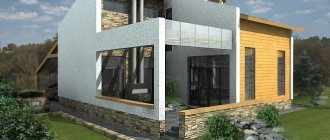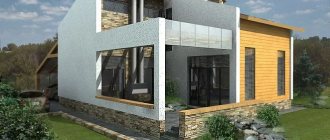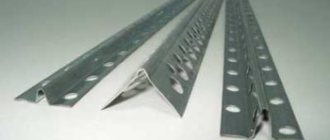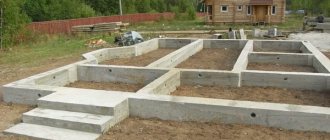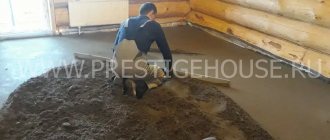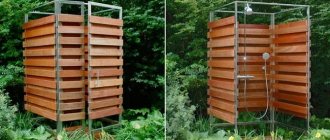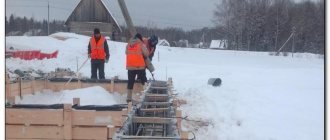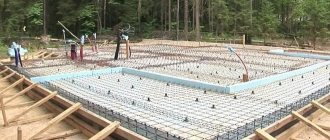On trading platforms, manufacturers present a wide range of materials for insulating buildings inside and outside. Let's understand what liquid thermal insulation is and what it belongs to this group of insulators. Let's get acquainted with the features of the subspecies using examples of specific collections. After reading the article, communication with specialists and consultants will be as productive as possible. This will allow you to make the best choice to obtain a quality result.
Application of thermal paint for wall insulation Source isollat.ru
Description of insulation
To increase the energy efficiency of buildings, manufacturers offer a choice of materials in the form of slabs, rolled sheets or sprayed compounds. The last option differs from the others in that the insulating coating is formed monolithic, relatively thin and is suitable for decorative finishing in almost any way.
According to the application method, materials can be divided into 2 groups: sprayed insulation in cylinders and paintable ones. The latter are applied by painting and spraying. The former are characterized by foaming, while the latter form a relatively thin-layer coating.
Application area
The composition of liquid insulation for walls differs from each other, so the application also varies. The material is mostly used in construction for insulating pipelines, walls, floors, ceilings inside buildings, roofs and facades. The products are also relevant in the automotive industry, as some insulators have anti-corrosion properties.
Liquid heat insulator is very effective when it is necessary to insulate surfaces of complex shapes - for example, in cars Source kursk.poliuretan-ppu.ru
Advantages and disadvantages
Builders prefer painting and sprayed thermal insulation due to a number of positive aspects. These include:
- ease of working with structures of any complexity;
- high efficiency of products with low coating thickness;
- resistance to various operating conditions, including physical stress;
- fire resistance;
- vapor permeability, water resistance for most samples;
- inertness to certain chemical reagents, biological activity;
- light weight, which is especially important for old foundations, since there is practically no load on the foundation.
However, the materials also have drawbacks. If some compositions are made as sprayed thermal insulation in cylinders, then the rest are applied using special equipment. Devices are rarely purchased for home use due to their high cost. Therefore, you have to turn to the services of specialists, which is reflected in an increase in the amount of the overall estimate.
Special installation for working with liquid insulators Source penoglass.ru
Polyfom - a new word in insulation
Polyfom is an insulation material made on the basis of polyethylene foam, a material with a system of closed pores, which provides a high degree of thermal insulation. This insulation is produced in rolls and has a sheet thickness of only 5 mm with a relative density of 30 kg/m3.
Polyethylene foam is covered on top with a thick layer of paper, which allows you to paste even heavy types of wallpaper over the insulation. However, in the building materials market, polypom occupies the position of insulating substrates for wallpaper.
Types of insulation
Liquid insulation materials include materials that in working condition contain water or organic solvents. That is, the classification of insulating agents is carried out not only according to the application method, but according to the chemical composition. So, there are several groups: thermal paints, liquid foam. This also includes ecowool due to its application by spraying.
The table discusses the thermal insulation properties of thermal insulation materials that are in demand in the private sector.
| Thermal paint (average values) | 0.0012-0.025 W/m*K |
| Liquid insulation "Polinor" | 0.025 W/m*K |
| Extruded polystyrene foam | 0.03 W/m*K |
| Sheet foam plastic (taking into account heat loss through joints) | 0.037-0.05 W/m*K |
| Penoizol | 0.06 W/m*K |
| Mineral wool depending on density | 0.06-0.07 W/m*K |
Comparison of materials by thickness relative to thermal conductivity Source yandex.net
Foam insulators
This is a group of insulation in cylinders, which contain polymer resins. Products that come into contact with air foam until they set. They have high adhesion to most substrates. Depending on the raw materials used in production, the finished product is environmentally friendly to varying degrees. Therefore, some insulators are not recommended for use inside residential premises.
Polyurethane foam (PPU)
The material is made on the basis of heterochain polymers in a liquid state. After blowing the foam, a chemical reaction with air causes the mass to increase in volume by 50 times or more. Unlike traditional polyurethane foam, the dry residue in this case has a less porous structure.
Sprayed polyurethane insulation is used mainly for insulation work in frame houses. Also relevant are products for roofing structures, facades, basements and technical rooms, and basements. Polyurethane foam is used as an insulator for pipeline communications, heating mains, external tanks, and subfloors.
Liquid polyurethane foam for insulation Source ctretrofit.com
By nature, the bases can be from:
- bricks;
- concrete;
- gas silicate or cinder blocks;
- wood;
- metal
Insulation with polyurethane foam is carried out using special equipment. Here, first, the ingredients are mixed and the working mass is foamed. The finished mass is sprayed onto the surface under pressure. Complete drying takes about 24 hours.
See also: Catalog of companies that specialize in home insulation
Penoizol
An alternative material to polyurethane foam is made on the basis of more inexpensive raw materials - urea-formaldehyde resin. It is characterized by toxicity, so its use is limited to outdoor structures. The structure of the dry residue is similar to extruded polystyrene foam. However, in the case of foam, its superiority over its slab and sheet counterparts lies in the absence of cold bridges in the formed coating.
Liquid penoizol Source perestroyka.info
In terms of density, the insulator is noticeably inferior to urethane analogues, which is only permissible for insulating unloaded structures. And with thermal conductivity the situation is a little better. Thus, a coating of 50 mm foam insulation and a 60 mm layer of polyurethane foam has almost identical efficiency.
The composition is applied by analogy with polyurethane foam through installation. Here, the components are also mixed step by step, foaming and blowing under pressure. The volumetric increase in the working mass occurs 30 times.
Polinor
Sprayed insulation Polynor goes on sale in small cylinders for a construction gun (for polyurethane foam). From one container you can form a coating 6-7 cm thick over an area of about 1 square. meters. The material's technical characteristics are almost identical to polyurethane foam.
Polynor insulation in cans Source stblizko.ru
The advantage over the PPU analogue is that it does not require expensive equipment; you can handle the work yourself. The foam is also inert to most reagents.
The downside is the higher cost of insulation, which is not relevant for insulating large objects. There is also less pressure in the cylinder, making voids difficult to fill. The dry residue can deform (swell) under the influence of chlorine-containing substances and concentrated hydrochloric acid. Sulfuric and nitric acid causes complete destruction of Polinor.
Warm paint
The basic basis of liquid thermal insulation for walls is water or acrylic dispersion. Various components can be used as filler here. More common: ceramic microspheres, fiberglass particles or foam glass, perlite.
Corundum
The basic base of multi-component paint is polyacrylic. The filler is ceramic with different densities of spheres. The consistency of the white suspension is similar to façade paints and varnishes.
The manufacturer offers a line of thermal paints for treating surfaces of different nature and operating conditions. The table provides a brief description (features) of the varieties.
Line of warm paints Corundum Source korund.spb.ru
Product line
Among liquid-ceramic coatings sold on the Russian market, Izollat is the leader in the number of product varieties presented. Thermal insulating paint of this brand is produced in seven versions:
- “Izollat 01” is intended for insulation of house facades, walls of garages and hangars, and other vertical surfaces. It features optimal viscosity and vapor permeability.
- “Isollat 02” - the material is used for processing industrial systems (pipelines, boiler rooms) that require operation at high (up to +170°C) temperatures.
- “Isollat 03” is liquid thermal insulation with fire retardant additives that provide increased fire resistance.
- “Isollat 04” is the only silicone-based material that can withstand temperatures of more than five hundred degrees. The range of similar thermal paints is no more than +250 degrees.
- “Isollat 05” is a universal product that provides fire protection and thermal insulation.
- “Isollat-nano” is a unique product with the effect of photocatalysis, which can only be found from this manufacturer. The material not only retains heat. Released under the influence of moisture and UV rays, hydrogen peroxide cleans façade systems of contaminants.
- Frost-resistant “Izolat m” makes it possible to carry out processing at temperatures down to – 15 degrees.
A new product produced by Isollat Effect is a combined product that combines heat-insulating paint with glass or ceramic fiber. The technology makes it possible to reduce the surface temperature, which cannot be achieved using other ceramic compositions.
Isollat is a relatively new material in the liquid thermal insulation segment, but its popularity is already quite high. The excellent performance characteristics of the finished coating make it possible to use this product in various situations. It should be noted that products under the Isollat brand are the only material that has several patents for inventions. The development of Russian scientists has passed laboratory tests, which is confirmed by technical documentation. This is a guarantee of product quality.
Video description
The video tells more about the Corundum thermal paint:
The coating is formed thin with a porous structure. Technically, the dry residue has high strength and ductility, which explains its resistance to cracking.
More often the material is used for thermal insulation of cold water pipelines. The protective layer prevents the formation of condensation and corrosion on metal lines.
Akterm and Astratek
The Akterm series is represented by 15 positions. 7 of them have thermal insulation properties. The table provides a brief description of the samples.
Application of Akterm thermal paint Source akterm.ru
| Standard | used as a waterproofing agent in the residential and industrial sectors. |
| Volcano | exhibits resistance to heating up to +500 degrees Celsius; applied to metal, penoizol, mineral base (concrete, brick, cinder block). |
| North | The paint is made on an organic basis; operating temperature from -35 degrees Celsius; has high adhesion to most substrates; shows inertness to aggressive environments; resistant to corrosion. |
| Facade | resistant to natural phenomena; used for external insulation of mineral bases. |
| Anti-condensation | base – aqueous dispersion; prevents the formation of condensation; Contains antifungal additives. |
| Metal | withstands heating up to +190 degrees Celsius; protects metal from corrosion; prevents freezing and condensation. |
| Concrete | used for interior work; suitable for painting concrete; contains antifungal additives; the coating is suitable for decorative painting and wallpapering; a 1 mm layer does not allow heat and cold to pass through. |
The main points of insulation under wallpaper
In an operating building that has the design thickness of the structures, additional thermal insulation of the outer wall in the apartment can be laid under the wallpaper without performing large capital works.
The materials can be used as a reliable heat insulator, and together they have several functions, which are distributed as follows:
- energy saving;
- soundproofing;
- preventing the formation of moisture condensation on the finishing surface and, accordingly, the appearance of mold;
- leveling (the foam layer elastically fits unevenness and hides minor differences);
- repeated use (the guarantee for some types of such insulation is up to 50 years).
Practical and reliable insulation for wallpaper
An example of a material that combines the listed functions in its characteristics is a polyph with a heat-reflecting layer (photo):
Despite the ease of installation, which is carried out using an adhesive composition, such wall insulation also has an acceptable price in comparison with the economic effect obtained during the period of its operation.
Video description
The video talks about SHUTTLE liquid thermal insulation:
Ecowool
An environmentally friendly product stands out against the background of thermal insulation materials. This is the only material that cannot be classified as a liquid insulation material in an unambiguous sense. But one of the methods involves using a ready-made mixture to prepare a working solution.
Spraying Ecowool Source myuspehlife.ru
Initially, the heat insulator consists of cellulose fibers in loose form:
- rejected products from printing factories;
- waste from the pulp and woodworking industries, from the production of corrugated and cardboard packaging;
- heterogeneous raw materials from recycled waste paper.
The raw materials are pre-treated with antiseptic drugs and fire retardants. Boric acid can make up up to 12% of the total volume. It provides resistance to moisture, fungi and mold. As a result, the insulation has a capillary structure, and not porous, unlike its analogues. About 8% is sodium tetraborate, a fire retardant substance that improves the fire resistance of the finished product. It also works as an insecticide that resists the appearance of settlements of certain insects.
The preparation of the solution for spraying is based on the lignin contained in the raw material. This natural substance becomes sticky when in contact with water. Spraying and simultaneously compacting natural fibers occurs using a special installation. Floors, walls, ceilings inside the building, and roof structures on sides protected from moisture can serve as a working base.
Industrial insulation with Ecowool Source stroyportal.ru
Tips and recommendations when choosing liquid thermal insulation for walls
First, decide where to apply the heat paint. Most often, the manufacturer labels the jar with the product. Look carefully at what surface you will apply this product to.
Also take a closer look at the contents of the jar. It must be uniform, without plaques or any inclusions. It is better if the color is white, but beige and gray shades are possible.
Do not ignore the density of the product. Low values will give greater heat transfer. Also find out the service life and interaction with various environmental indicators.
Not every liquid thermal insulation has an easy application method. The tool should be easy to use. Give preference to trusted companies.
Video - Liquid thermal insulation Armor: do-it-yourself insulation of a balcony, loggia, walls, ceiling, floor
Work technology
Sprayed insulation and thermal paint are applied to a clean, durable base without corrosion or areas of biological damage. Painting is carried out in the same way as with traditional compositions: priming, forming a layer-by-layer coating with intermediate drying of each. The manufacturer writes on the packaging about the intricacies of the work.
Insulation of walls using insulating foam occurs in the following order:
- installation of sheathing made of lumber, metal or plastic profiles;
- spraying a heat insulator onto the working surface across the entire width of the opening in the direction from bottom to top (it may be possible to repeat the procedure to increase the thickness of the coating);
- protection and decorative finishing of the formed layer.
The sheathing serves as a reinforcing material and a guide to the thickness of the insulation. After the foam has dried, the excess foam composition is cut off along the sheathing. This results in a smooth surface, which is easier to work with later at the finishing stage.
Foam insulation Source ytimg.com
Location of other outbuildings relative to the fence
According to sanitary and fire safety standards, the minimum permissible distance from a neighbor’s fence on which a bathhouse can be located is at least 3 meters. However, due to the specifics of this structure, it is necessary to take into account a number of nuances:
Having your own bathhouse is great!
At what distance from the fence can you build a bathhouse?
- In addition to the boundary line, the distance to the neighbor’s house should be taken into account; it should be at least 8 meters. This distance can be reduced to 6 meters if your bathhouse is built from materials of a flammability class no higher than G2. It could be: brick, stone, concrete. However, according to fire safety rules, if the windows of a neighbor’s house overlook your bathhouse, then the minimum distance may increase
- Sewage should not enter your neighbor's property. If you arrange communications in the form of a sewer and drainage system, then the minimum distance to the neighbor’s fence can be reduced to 2.5 meters
the distance from the neighbor’s fence on which the bathhouse can be located is at least 3 meters.
- Take into account the location of other outbuildings, the minimum permissible distance from them is at least 1 meter
- Make sure that the building does not cause dense shadows in the neighboring area
- Follow all fire safety rules to avoid fire
Choosing a place for the garage
When building a garage in close proximity to the border of the site, you should retreat at least 1 meter from the fence with the neighbor. In addition, the roof slope should be directed towards your site. To prevent melting snow from falling from the roof onto your neighbor’s property.
A detached garage can be built by stepping back 1 meter from the neighbor’s fence
And if you plan to locate the garage on the side of the roadway or street, then the minimum allowable distance from the fence will be 5 meters for the street, and 3 meters for the alley or driveway. The distance from the garage to other buildings should not be less than 6 m.
Garage attached to the house
If the garage is attached to the house, then it is considered part of the house and therefore the distance from the fence is the same as for the house (see above “Table of minimum allowable distances between buildings depending on the type of material from which the house is built”).
If the garage is part of the house, the distances from the fences are the same as for a permanent residential building
Location from the toilet fence and cesspool
According to sanitary standards, you can build a toilet on your own property no closer than 1 meter from your neighbor’s fence. Be sure to consider the location of the source of drinking water. The well or well must be removed at a distance of at least 12 meters.
If you plan to build a cesspool or septic tank, then a lot depends on the type of soil and the depth of the groundwater. The distance from the fence is from 1 to 3 meters, and the distance from the source of drinking water can reach 50 meters.
Briefly about the main thing
The group of liquid insulation materials includes thermal paints and polymer foaming compounds. This also includes moistened ecowool, as it is applied by spraying.
The main advantage of the materials: high energy efficiency of thin-layer coating. The main disadvantage is the total cost according to the estimate. More often, spraying is carried out using special equipment that is not purchased for home use. Therefore, we have to hire craftsmen. If you purchase the material in gun cylinders, you can do the work yourself. But here there is a large consumption of expensive foam.
The insulation technology consists of 3 stages: surface preparation, application of insulation, decorative finishing. The base must be clean, strong and “healthy”. A sheathing is installed under the sprayed compositions. The finish can be anything: painting, paneling, plastering, cladding. Less commonly, thermal insulation coating is used as an independent coating.
What is the best method for applying liquid thermal insulation materials?
Liquid insulation is applied using equipment in several layers.
Each applied layer must dry and harden. Before application, prepare the surface, freeing it from dust and dirt. All cracks are reinforced and plastered.
After the material has dried, the edges are cut off (if required), and the surface is coated with a primer.
Liquid types of insulation have many advantages and a minimum of disadvantages. To use them, you need equipment and calling specialists, which is expensive. But, it will have a long service life and good performance.
